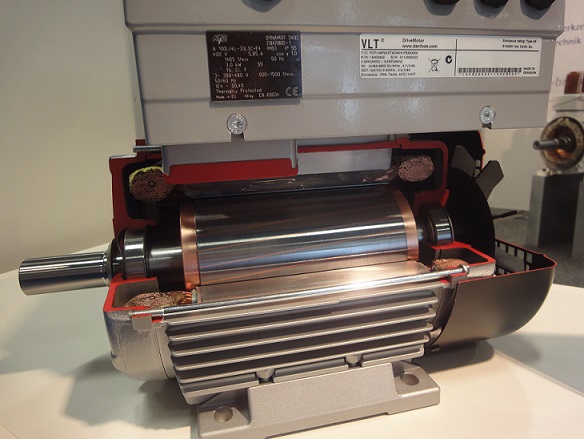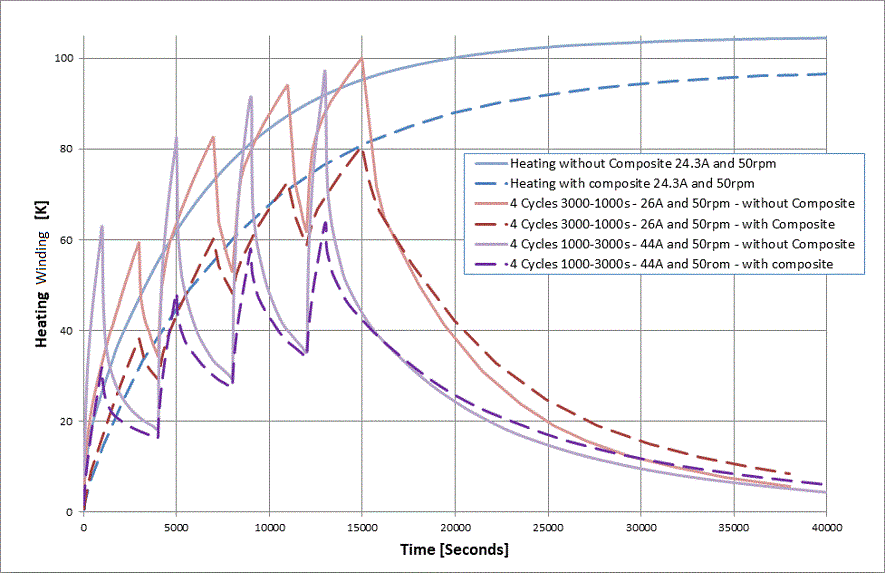The medium size segment can be found in the industry and automation as well as in drive trains for electric vehicles, therefore mostly induction motors and synchronous motors with permanent magnets.
 Motor with squirrel-cage rotor and integrated frequency converter
Motor with squirrel-cage rotor and integrated frequency converter
The new energy efficiency standards and the desire to constantly increase the current density without exceeding the maximum temperatures make it necessary to optimally design the ventilation of the newer machines.
At the beginning of the industrial age, power density of medium machines was much less; so that most of the existing surface of the casing was sufficient to remove the losses; for the smallest and small machines, this is still good practicse . Cooling fans enable an extension of the casing surface and a better heat transfer per convection. An active cooling with a fan or with a water loop will enable much better heat transfer per forced convection.
Measurements are much easier to carry out than for large machines. Usually series of measurements are available, which enable a good validation of the calculation results. The main reason for discrepancy between measured and calculated temperatures is usually the input of the iron losses and of the magnet losses.
When the stator of a motor is equipped with a water jacket then the current density can be doubled for low- speed rotors and low iron losses and even tripled for high-speed rotors and high iron losses. For motors with a magnet excitation of the rotor, the thermal challenge is no longer the temperature of the insulation of the stator winding, it is the temperature of the magnets. Accordingly, the estimation of the magnet losses is of the utmost importance.
Predefined driving cycles determine the boundary conditions and the speed sequences. The main engine of an electric car and all auxiliary engines must be able to drive their own driving cycles without
temperature damage. The engine starts from a cold state, it then produces heat, which it initially holds in the heat capacities of the components and further in the cooling media and in the
environment. If the components have a high heat capacity, they will slowly warm up and slowly cool down. If the warm-up phase is relatively short, then a much higher current density can be set than if the
motor is in continuous operation.
The following picture shows the maximum winding temperatures of a motor with permanent magnets. The two blue curves for 24.3 A continuous operation; the two pink-red curves for 3000 seconds heating
followed by 1000 seconds cooling with 26 A and the violet curves for 1000 seconds heating followed by 3000 seconds cooling with 44A.
 Temperatures of the stator winding during continuous operation and cycles
Temperatures of the stator winding during continuous operation and cycles